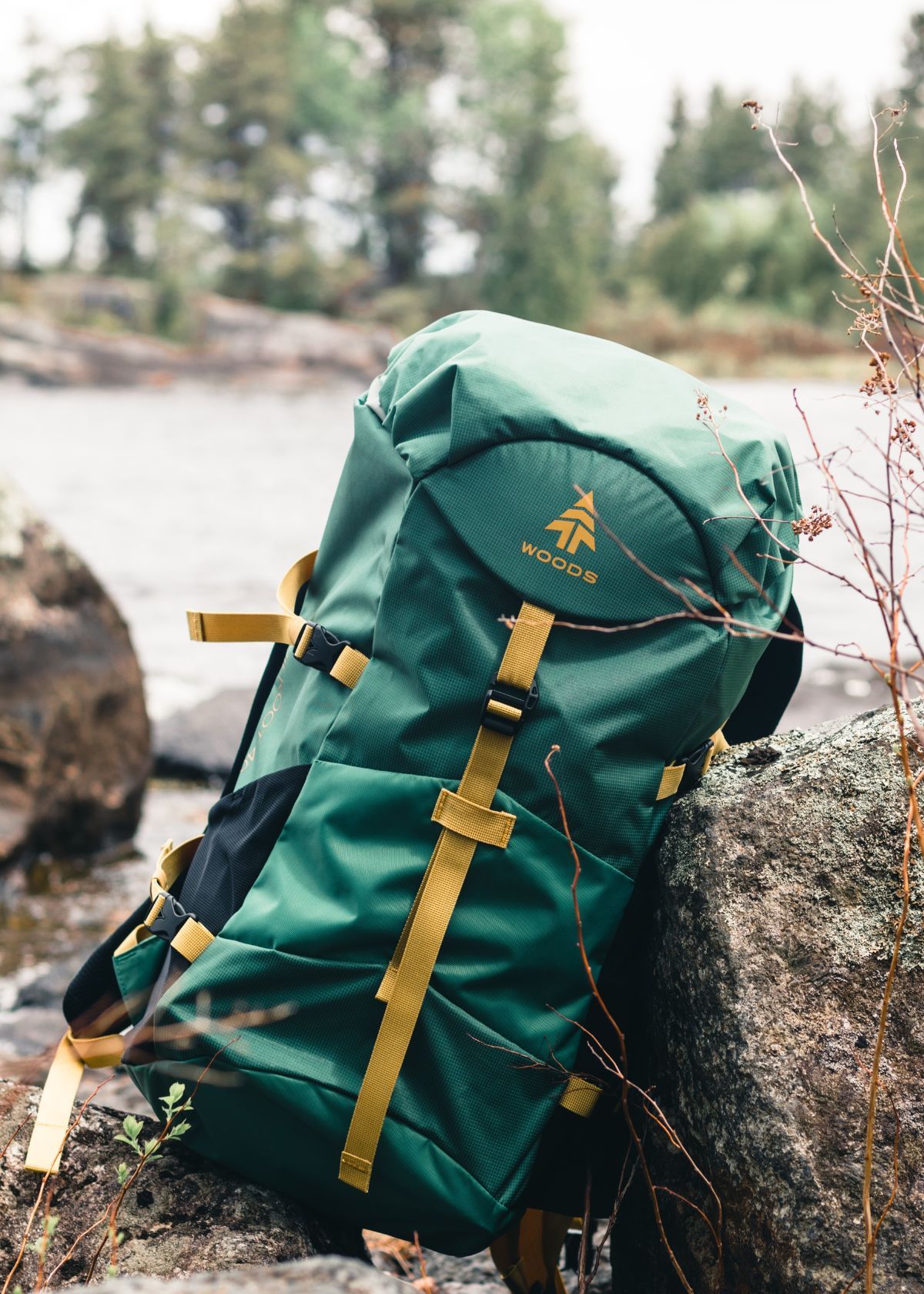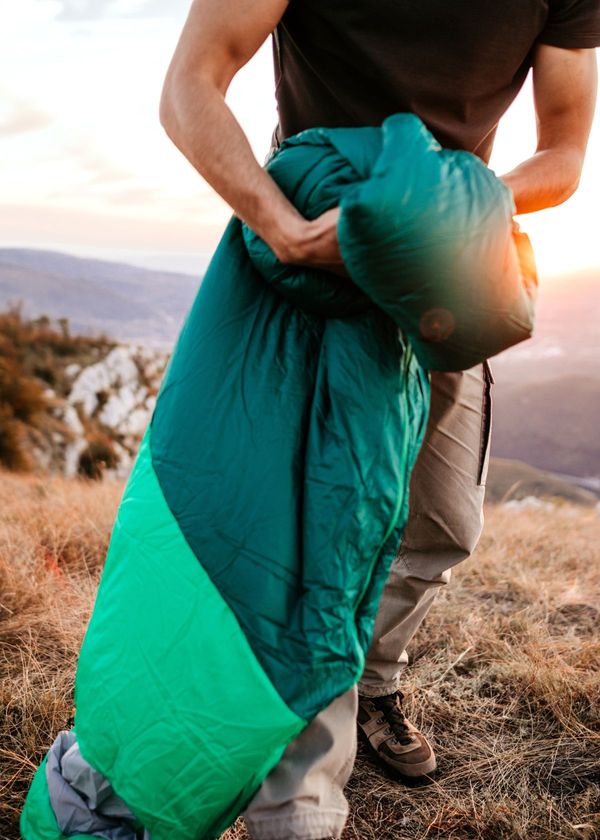Your trusty backpack has been your companion on countless adventures, carrying all of your essentials as you wander through new and exciting places. But with all that use, it’s bound to get a little dirty. Whether it’s the residue of a messy lunch or the grime from a long hike, it’s important to keep your backpack clean so it can continue to serve you well.
The good news is that washing your backpack or plastic bag is not rocket science and can be done with simple steps. This guide will cover everything you need to know to ensure your backpack is sparkling clean.
So, whether you’re planning your next big adventure or need to freshen up your daily carry, join us as we delve into the world of backpack washing.
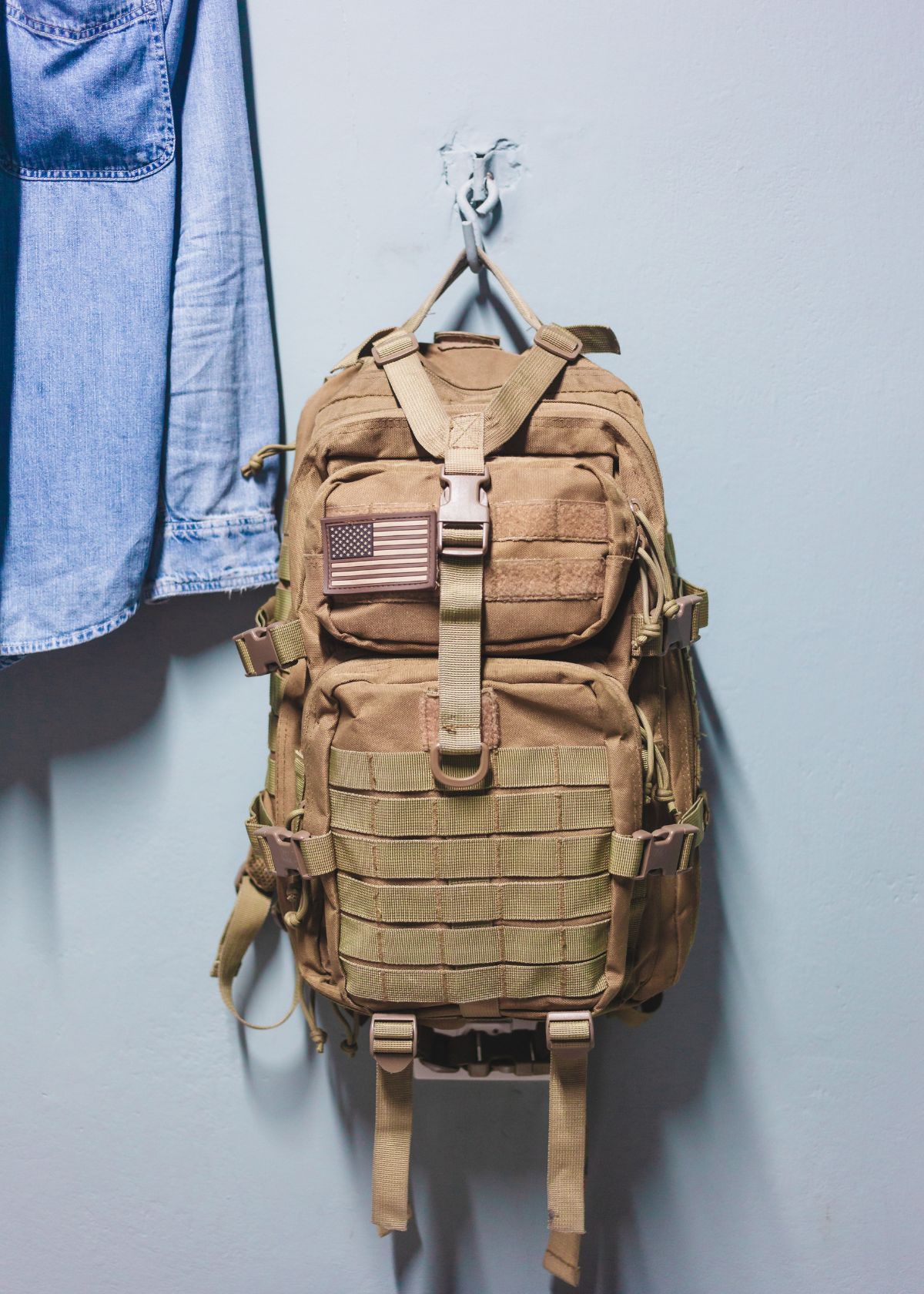
Importance of washing a backpack
A backpack is not just a simple piece of cloth or material you carry your essentials in, but it is an adventurer's best companion that holds memories, experiences, and survival gear. Whether you're hiking through the mountains, exploring the wilderness, or simply commuting to work, your backpack bears the brunt of the journey and collects dirt, grime, and bacteria along the way.
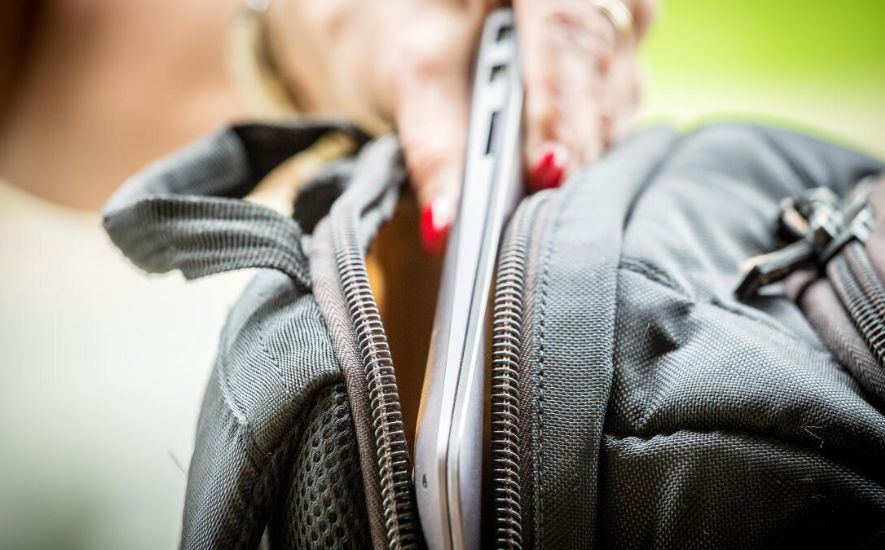
Protecting Your Health
Your backpack comes into contact with all sorts of surfaces and environments, and it's easy for it to become contaminated with harmful bacteria, germs, and dirt. Carrying loose dirt from a backpack can result in skin irritation, rashes, and other health issues, especially if it comes into direct contact with your skin.
Maintaining the Backpack's Quality
A dirty backpack can start to look unsightly, dull, and worn out. Regular washing helps keep your backpack looking like new, preserving its vibrant colors and vibrant design. Additionally, dirt and grime can wear down the material and reduce the backpack's overall quality and durability.
Preserving the Environment
Many backpacks are made from synthetic materials that are not biodegradable, which means that if not disposed of properly, they can harm the environment. Washing your backpack helps keep it in good condition, reducing the need for replacements and ultimately helping to preserve the environment.
Prolonging the Backpack's Life Span
Just like any other item, a backpack will eventually wear out and need to be replaced. Regular washing and proper maintenance can help extend the life of your backpack, saving you money and reducing the waste that ends up in landfills.
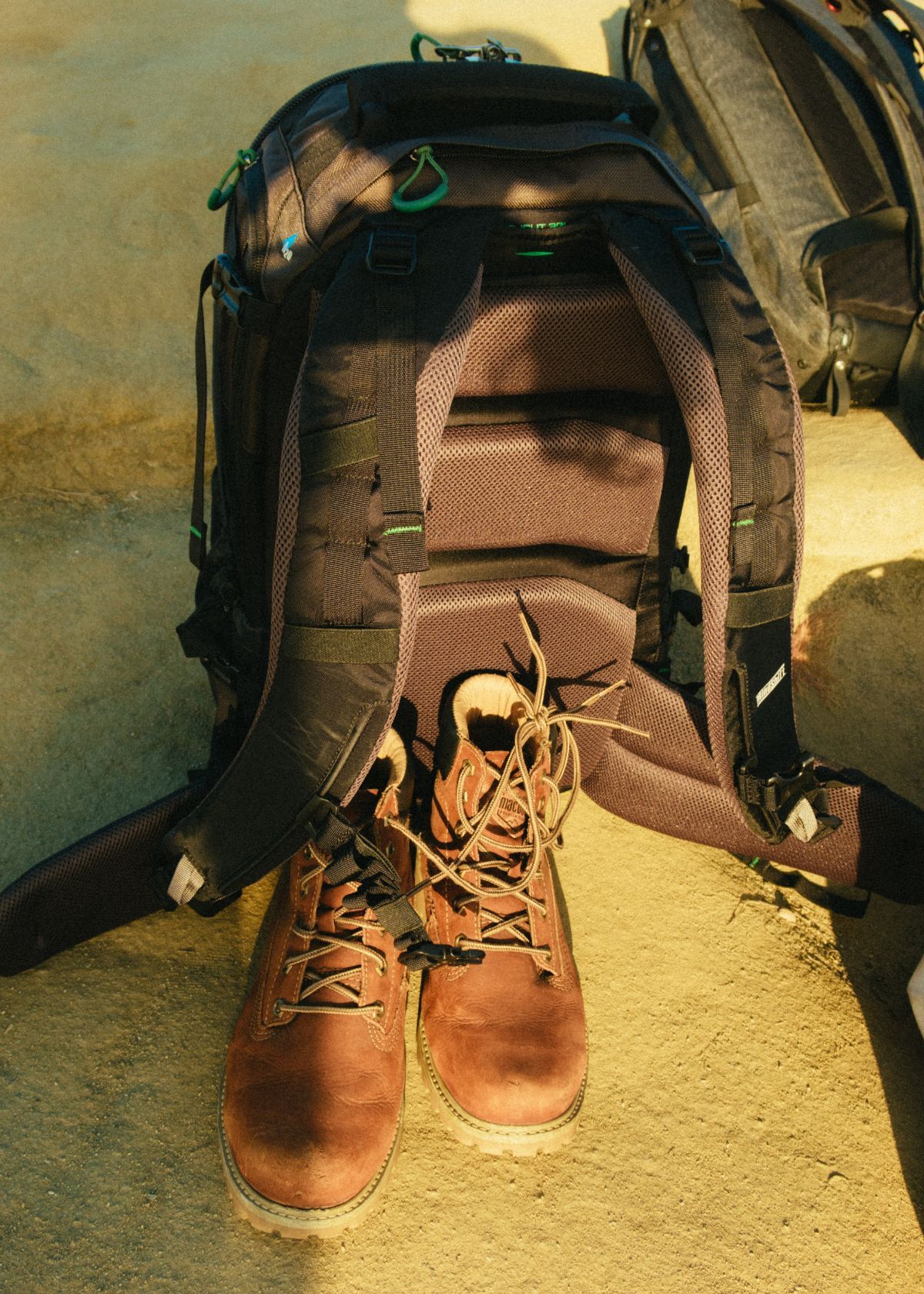
Steps for washing a backpack by hand
Your backpack or gym bag is more than just a container for your belongings. It's an extension of you on your adventures. From hiking to camping, your backpack endures the elements and becomes a collection of memories.
But with all the dirt, sweat, and grime it accumulates, it's important to give it a proper hand wash clean to keep it functioning properly and smelling fresh.
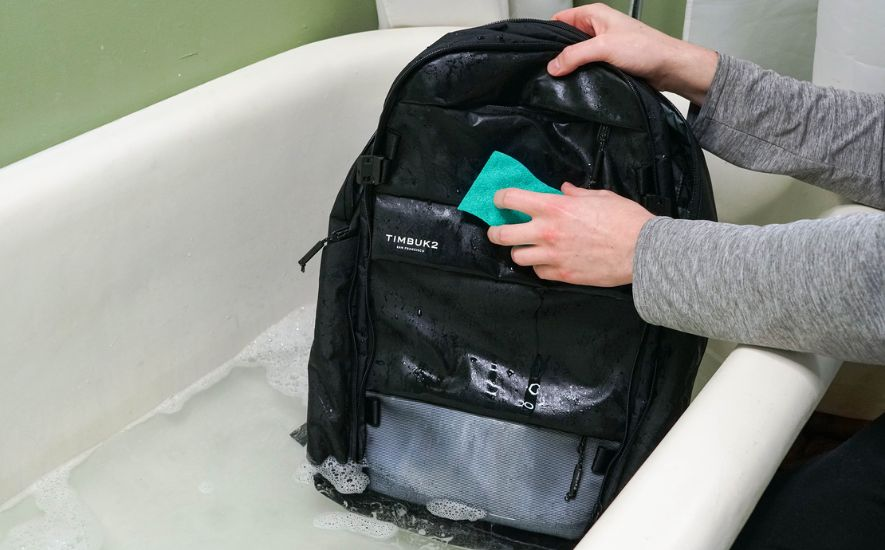
Materials Needed
- A large basin or sink
- Mild laundry detergent
- Soft-bristled brush
- Clean cloths or towels
- A drying rack or clean towels
Step 1: Empty Your Backpack
Take out all contents from your backpack, including any loose items, all the pockets, and compartments. If you have any detachable parts, such as a rain cover, take them off as well.
Step 2: Check for Manufacturer's Care Label
Before washing, it's important to check the manufacturer's care label to see if they have any specific instructions or recommendations. Some backpacks may require special cleaning methods or products.
Step 3: Fill Basin with Warm Water and Detergent
Fill the basin with warm water and add a small amount of soapy water. Stir the water to ensure the detergent is fully dissolved.
Step 4: Gently Clean the Backpack
Use a soft-bristled brush to gently scrub the backpack, paying extra attention to any stained or dirty areas. Be sure to clean all sides, including the straps, and any compartments or pockets. Avoid using excessive pressure, as this could damage the material.
Step 5: Rinse with Clean Water
Rinse the backpack thoroughly with clean water to remove all soap residue.
Step 6: Squeeze Out Excess Water
Use clean cloths or towels to gently squeeze out any excess water from the backpack. Do not twist or wring the backpack as this could damage the fabric.
Step 7: Dry the Backpack
Lay the backpack flat on a drying rack or clean towels. Avoid hanging the backpack as this could stretch the straps. Allow it to air dry completely before storing it away.

Machine washing a backpack: dos and don'ts
Your backpack is more than just a bag to carry your things; it's a trusty companion that goes with you on every adventure. Whether it's hiking, traveling, or just running errands, it's always there for you. So, it's important to take good care of it.
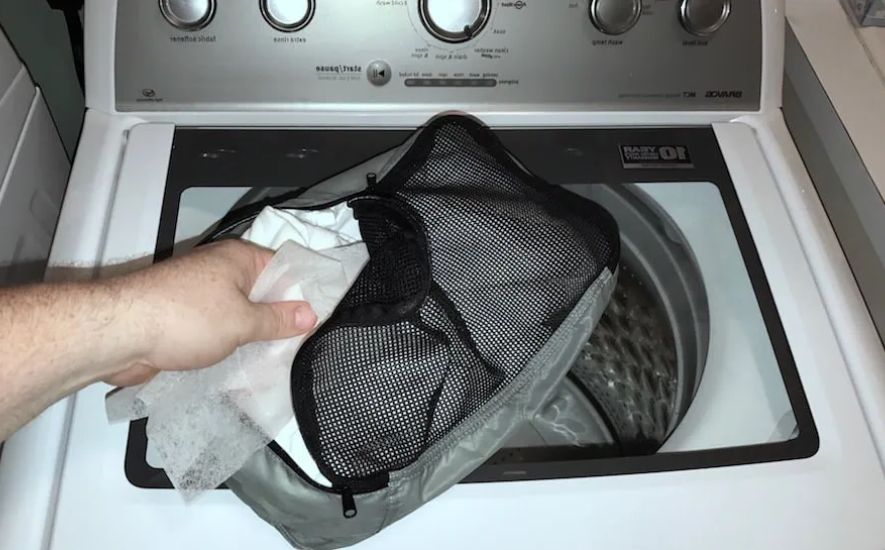
Preparation is Key
- Remove all loose items from the backpack, including pockets, water bottles, and other accessories.
- Check the care label for specific instructions and make sure the backpack is suitable for machine wash.
- Clean any dirt or debris from the surface of the backpack before washing.
Dos of Machine Washing a Backpack
- Use a mild detergent and a gentle cycle to avoid damaging the fabric or zippers.
- Wash the bag with cool water.
- Place the backpack in a pillowcase or mesh laundry bag to protect it from getting tangled or caught on other items.
- Avoid using fabric softeners, as they can clog the fabric and affect its breathability.
Don'ts of Machine Washing a Backpack
- Do not use hot water or a hot cycle, as this can shrink or damage the fabric.
- Do not use bleach or any harsh chemicals, as these can discolor or weaken the fabric.
- Do not overload the washing machine, as this can cause damage to the backpack or other items in the wash.

Understanding the type of material used for your backpack
Backpacks are one of the most essential items for people who are always on the go. From students to travelers, from commuters to hikers, backpacks have beco--me a staple of everyday life. With so many styles, designs, and materials available in the market, choosing the right backpack for your specific needs can be a bit overwhelming.

Durability and Strength
The material used for your backpack can determine how well it can withstand wear and tear over time. Heavy-duty materials like nylon and polyester are known for their strength and durability, while lightweight materials like cotton or canvas may be more prone to tearing or fraying.
Comfort and Breathability
Comfort is key when it comes to choosing a backpack, especially if you're going to wear it for extended periods. Breathable materials like mesh and polyester prevent sweat buildup and keep you cool, while materials like leather or PVC may trap heat and cause discomfort. The backpack's padding and back panel design also play a role in overall comfort.
Water Resistance
For outdoor activities or inclement weather, it's important to choose a backpack that's water-resistant. Materials like polyurethane-coated nylon or PVC can help keep your belongings dry in wet conditions. However, it's important to note that while water-resistant backpacks can keep out light rain, they may not be fully waterproof.
Weight and Flexibility
The weight and flexibility of your backpack can greatly impact how comfortable it is to wear. Lightweight materials like mesh and ripstop nylon are great for minimizing weight, while more rigid materials like leather or PVC can make it difficult to pack your backpack efficiently.
Preparation before washing
Washing clothes may seem like a simple task, but it's important to prepare properly before tossing your clothes into the machine. From sorting and checking for stains to choosing the right detergent, there are a number of steps you can take to ensure that your clothes come out looking their best.
Sorting
Before washing your clothes, it's important to sort them into different piles based on color, material, and care label. This will help prevent any color bleeding, shrinkage, or damage to the clothes. It's recommended to separate whites from darks and to wash any new or brightly colored items separately in case there's any dye transfer.

How to dry a backpack properly
The first thing you need to do is make sure your backpack is empty. If you can, remove all of the items in it and lay them out on a flat surface. If this isn't possible, then at least empty as much water as possible from the inside of your mesh bag.
Next, get some paper towels and place them inside the bag where it's wet. Leave them there for a few hours or overnight if possible. The paper towels will help soak up some of the moisture that remains bag inside after drying it outside.
When you're ready to continue drying your bag, put it outside in direct sunlight on a warm day. This part can take several hours, depending on how wet your bag is and how much sunshine there is in your area at that time of year. When you touch it, you'll know when your pack is completely dry and feel no moisture anywhere inside or out!

Tips for maintaining the quality of your backpack
Backpack maintenance is important because it will help you to keep your backpack in top condition. Backpacks are made of different types of materials, including nylon, leather and canvas.
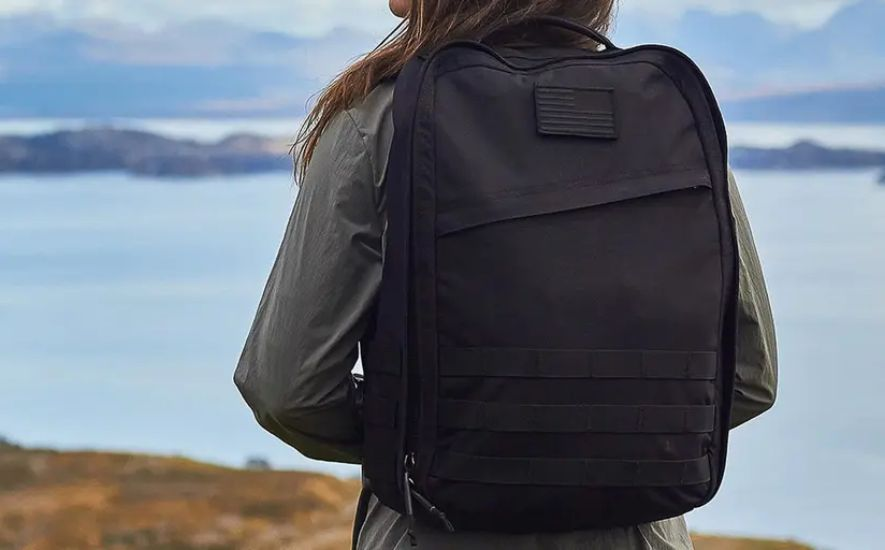
Nylon backpacks are waterproof and durable but can get dirty easily if not properly maintained. Leather backpacks can crack and split if you don't treat them properly. Canvas backpacks are more flexible than leather, but they don't offer as much protection for your items inside the bag.
If you want to protect your backpack from damage, use these tips:
Store It Properly
When you're not using your bag, store it in a cool place where it won't get damaged by sunlight or moisture. If it's winter time, make sure there isn't a lot of snow on the ground where you store your backpack so that water doesn't get inside through the bottom when it melts during springtime.
Wash It Regularly
You should wash your backpack after each trip or after using it every few days if you're using it every day. You should also wash your backpack whenever it gets dirty so that no dirt builds up inside and damages the fabric or zippers on the outside of the bag over time.
Keep it dry
Store your backpack in a cool, dry place when not in use. If possible, hang it using the compression straps that come with most packs. If not, lay it flat on a clean surface away from direct sunlight and humidity sources (such as windows or heaters).
Don't overload it
This is the most common mistake people make when using a backpack. Overloading your pack with too much weight can cause stress and damage to both your body and the pack itself. The best way to avoid overloading is by using a luggage scale at the airport or train station before check-in. If you're traveling by plane, check out this guide on how to pack light!

Frequently Asked Questions (FAQs)
Washing your backpack is an essential part of keeping it in good condition. Whether you have an old backpack that's been around the world or a new one that's still in its prime, you should know how to clean it properly so it lasts as long as possible. Here are some frequently asked questions on how to wash your backpack:
Should backpacks be washed?
The short answer is yes! Backpacks are one of the dirtiest items in your child's wardrobe. If you don't wash them periodically, they can harbor all kinds of germs and bacteria that may be harmful to your child's health.
What about washing machine cycles? Backpacks are made of fabric and other materials that can easily be damaged by water, heat, and agitation. The best way to clean your son or daughter's backpack is by hand washing it with mild soap (or detergent) and warm water.
Rinse it well with clean water after each cycle — especially if there are stains — before hanging it up to dry completely before using it again.
How can I clean my backpack at home?
In order to keep your backpack clean and fresh, you can follow these steps:
- First, remove all the contents from your backpack and lay them on a table or other flat surface.
- Next, wipe down both the inside and outside lining with a damp cloth. This will remove any dirt or debris that may have accumulated inside the bag during use.
- Finally, wash your backpack by hand with mild soap and warm water in the sink, or place it in your washing machine on a delicate cycle with mild soap.
- To ensure that your bag is thoroughly cleaned, consider using a specialized backpack cleaner that contains enzymes that will help break down dirt and grime on the fabric of your pack.
Are all backpacks washable?
Almost all backpacks are washable, but check your product tag or care instructions for information about the washing process. For example, some bags may be machine-washable in cold water on a gentle cycle with like colors, while others may require hand washing with cold water and mild soap.
In general, you should avoid exposing your backpack to direct sunlight and harsh weather conditions because they can damage the fabric over time.
Some backpacks feature waterproof material that allows them to be washed in a washing machine without any worry of damage. However, most backpacks don't feature waterproof material and should be cleaned by hand using mild soap and lukewarm water.
How do you wash a backpack without washing it?
Clean your backpack by using a soapy cloth to wipe down the outside. To clean the inside of your backpack, use a vacuum cleaner with an upholstery soft brush attachment. If you have a large backpack, you may need to use two attachments to clean the entire bag thoroughly.
Wash the backpack when it's dirty or if you spilled something on it. You can wash backpacks by hand or in a washer and dryer. You can also send them to a professional dry cleaner and get a hefty dry cleaning bill if they're expensive or fragile.
Conclusion
We hope you found our ultimate guide on washing your backpack informative and helpful. By following the tips and techniques we've provided, you can keep your backpack clean and fresh for all your future adventures.
Remember, a clean backpack not only looks and smells better, but it also helps to prolong its lifespan. So, take care of your trusty companion and keep it in tip-top shape. Thanks for reading, and happy exploring!


